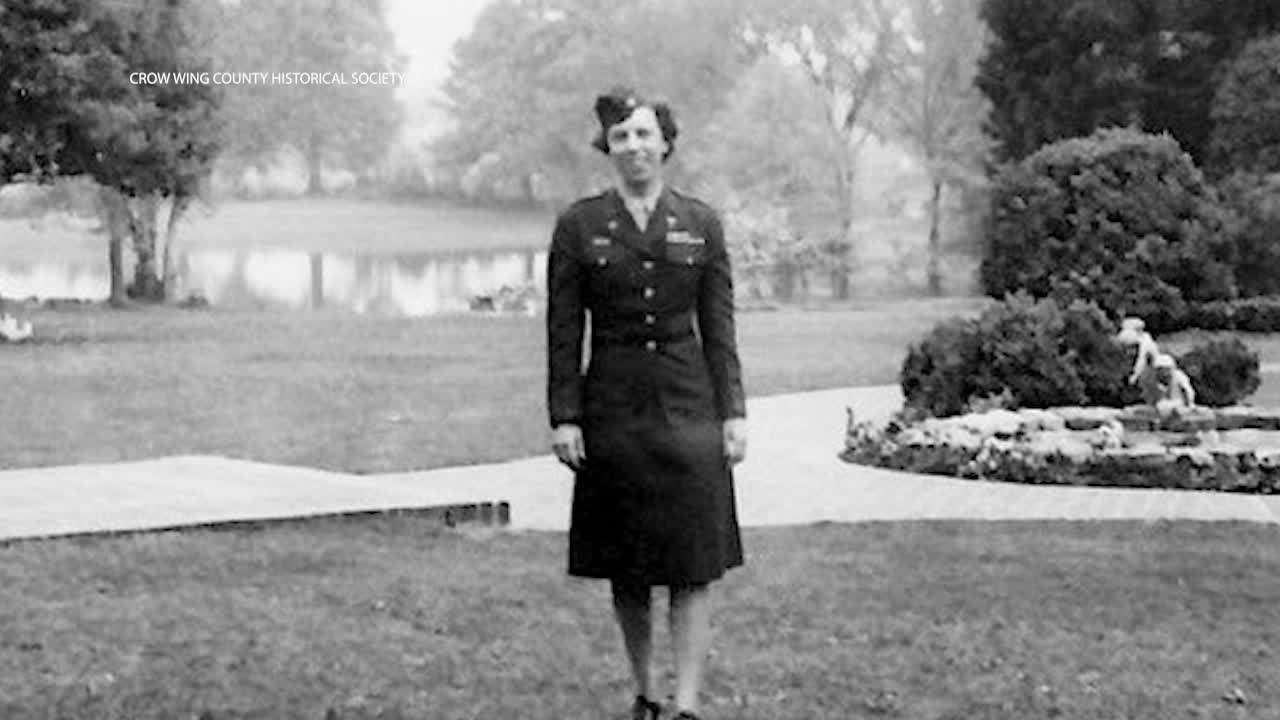Family of WWII army nurse from Brainerd receives a distinguished award honoring her life and work
[anvplayer video=”5169495″ station=”998122″]
There was a poignant, patriotic gathering in Brainerd Saturday.
Hundreds of people gathered at the Gichi-ziibi Center for the Arts, to honor the life of Lieutenant Colonel Hortense McKay, and her service during World War II.
“She was definitely writing history as she was going through tumultuous times,” says Colonel Hope Williamson-Younce, the Interim Corps Chief of the U.S. Army Nurse Corps.
“So she was there in the Philippines when the bombs fell on Dec. 7, 1941,” adds John Erickson, the archivist for Brainerd Public Schools. “So they had to learn how to care for battlefield casualties in a jungle environment.”
McKay, a 1927 graduate of Brainerd High School, was among 71 U.S. Army nurses stationed in Manila when Japanese forces began bombing there, only hours after the attack on Pearl Harbor.

She and her fellow nurses were overwhelmed by casualties.
“So you have heat, you have illness, you have combat injury, you have starvation going on,” Erickson says.
He shared with 5 EYEWITNESS NEWS grainy images of McKay’s service — and of the torturous days ahead, when U.S. troops were forced to retreat into the Bataan jungle.
All as army nurses were setting up primitive field hospitals, with beds, tables and even toilet seats made of bamboo.
“During the last week of the siege, there were upward of 7,000 casualties at Bataan hospital,” says Captain Rachel Cochran, of the Minnesota Army National Guard. “Can you imagine? That’s over seven of these auditoriums, filled with the sick and injured.”
On Christmas Eve, 1941, McKay and her colleagues were evacuated to the nearby island of Corregidor.
They returned to Bataan the next month — where heat, starvation, and mounting casualties awaited them.
“So the atmosphere is toxic to the human body,” Erickson explains. “Water is difficult to come by, clean. Dysentery and disease is rampant. They’re losing weight because they didn’t have food to live on. Rations being cut left and right — and they were in combat.”
Months later, the nurses were evacuated again — this time by submarine — to Australia.
McKay would continue serving in the Pacific through the end of the war — credited with innovative techniques in developing Mobile Army Surgical Hospitals, or MASH for short.
“I think that was the first beginnings of now what we have called the field hospital proper, and hospital centers, and the field hospital you saw deployed in COVID,” Williamson-Younce says. “But under austere conditions, with no playbook.”
“She (became) the first U.S. Army nurse educator, and then trained other nurses, who ultimately would be in combat situations in Korea and Vietnam,” Erickson adds.
McKay left the service in 1960, retiring in Brainerd.
She passed away in 1988.
Now, all these years later, McKay’s family received a Congressional Gold Medal in her name — one of the two highest civilian honors in the U.S.
“Yeah, unbelievable,” declared Patricia McKay Broback, her niece. “We are very proud of our aunt. But I would say she would be very humble and a little blown away by the whole situation, and feel that she wasn’t deserving, which she is.”
It turns out, McKay and her family took trips to the Pacific, so she could give them some understanding of what she had experienced.
“She took all of us to the Philippines, to go to Corregidor to do the route of the death march in Bataan,” Broback recalls. “To see what she’d done, so we’d have a better understanding of her and her life.”
Hortense McKay — mother, healer, and army nurse.
“I think it’s great that (army nurses) have somebody like Hortense,” says Dave McKay, a nephew. “To look at her career, see what she did, and have somebody — footsteps to follow in.”
A Minnesota woman who spent her life serving others, honored this day and always remembered.
“When we say nursing is a calling, she had purpose,” adds Williamson-Younce. “We’re so very grateful at the Army Nurse Corps for everything she’s done for our profession. And her legacy lives on.”